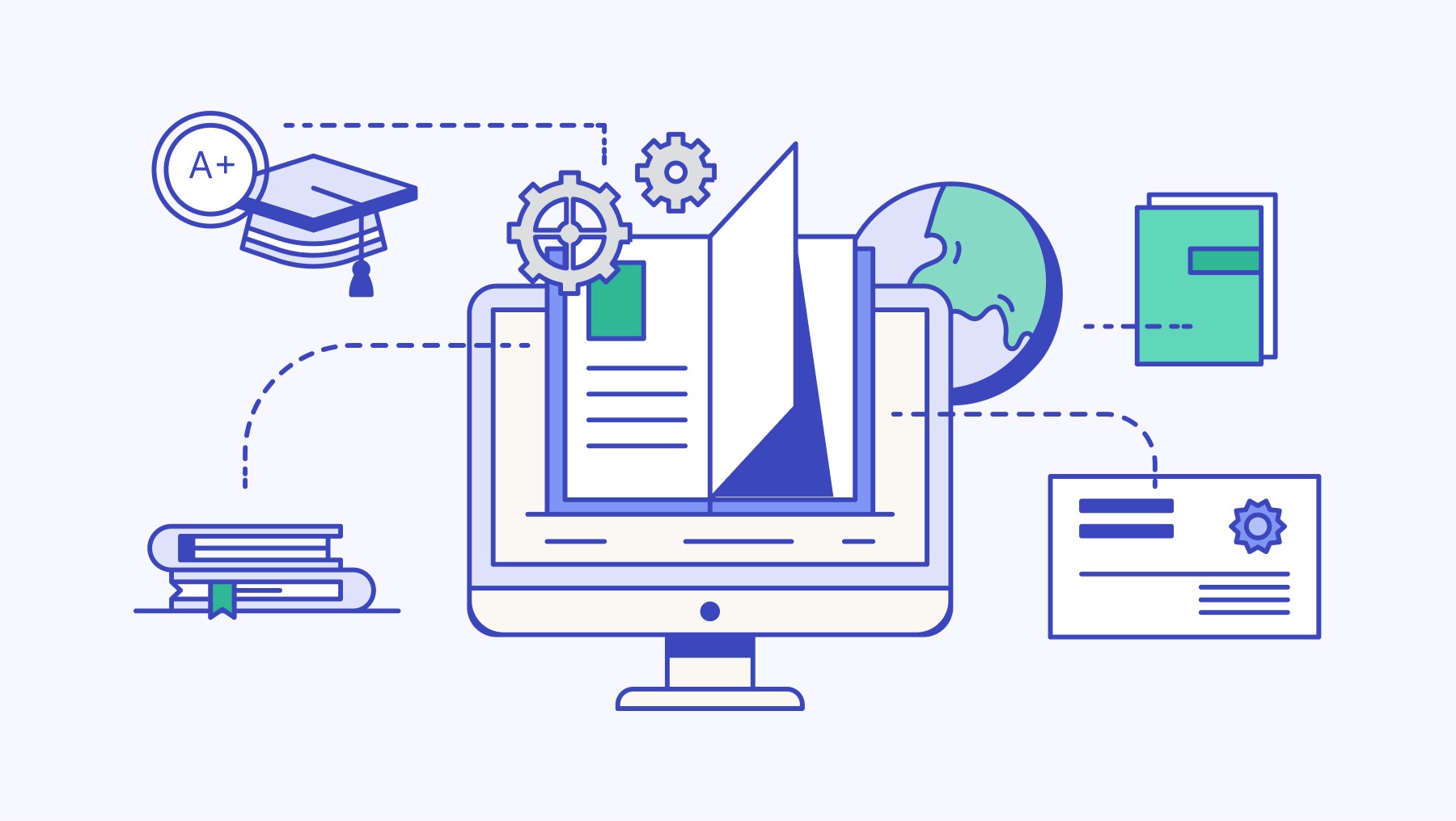E-learning is a learning system focused on formalized education but uses technological devices as its central resource. It has a wide range of benefits. E-learning was focused on assisting students with knowledge outside of their classroom. The Covid-19 pandemic gave e-learning a whole new element – a platform devoid of human interaction. The past one and a half years has seen a surge of online learning where students had no life on campus, and even attended their convocation through online graduation ceremonies.
Many instructors, teachers and professors also had to up their game during the pandemic from pre-recorded lessons given on Coursera, FutureLearn, to giving live lectures on a course in empty classrooms or from the comfort of their home. This meant that it was harder to interact with students, give detailed feedback on assignments.
During the pandemic, many educational institutes, especially those that were well-funded, were able to hop on e-learning platforms quickly, as compared to underfunded schools. This meant that there were more debates on technological advancements in education, and a necessity to upgrade systems already in place.
Google Classrooms, LMS, and other institutional websites became more important. They have been in use to help students submit assignments, and for instructors to give prompt feedback, now there had to be separate softwares for timed quizzes, exams and other assessments.
Corporations also had to make changes and upgrade their staff to engage with online platforms for work. Slack, Jibble, Workstack and Asana all gained worldwide popularity to assist with employees’ deliverables, time and task management.
Most conferences and training sessions were now conducted online. Employees had to jump in on these conferences while managing chores, tasks and life in the pandemic while working. Workshops and assessments were also done from home.
While this was effective for many, and travelling time and costs were negligible, there were many debates about working on a screen from home, and many employees felt burnt out. It was only after some time that people adjusted to the new life. There was a need to increase productivity and help create a healthy work environment at home.
The e-learning industry has grown a staggering 900% since 2000. (source: elearningindustry.com) Organizations now need to ensure that they have the best e-learning features available. Continue reading this blog to find out about the must-have e-learning features essential for businesses.
As a result of this increase, digital instructional materials, such as optical discs, pen drives, and Kindle, and cloud based technology like Google Cloud, Apple Cloud, Drive One, are replacing conventional learning strategies rapidly.
Feature 1: Signing up online
The first big move toward e-learning is signing in to your preferred online courses. Students will be asked to log into a learning management system shortly after enrolling in their preferred online course. As a result, signing up online is the first and most significant feature of an e-learning platform. Learning management systems are an essential part of all e-learning platforms. They help students view their syllabus outlines, contact their professors and gain access to most course materials, like online lectures, relevant videos, audio files, and other resources.
Feature 2: Facility of uploading documents online
This is a vital feature of e-learning for platforms. It allows users to pick and choose documents from their computer and upload it on the LMS or VLE through this feature. This metadata feature also allows users to search and browse for files. This is another reason why e-learning softwares should be easy and seamless to use.
While most organizations and educational institutes create their learning management systems, there are many popular options available in the market. The most common ones are Adobe Captivate Prime, Docebo, and Moodle. During the development of an e-learning platform, it’s essential to keep in mind the pain points of your clientele. Hence, we would strongly advise organizations to get a custom VLE or LMS made to serve the purpose more efficiently.
Feature 3: Responsive Design
To go responsive, or not to go responsive? That is not even a question anymore… In all honesty, this might not count as a feature entirely but still it is one of the most critical components to have. Students need access to eLearning courses at all times, from any place and through any device thanks to the pandemic.
As a result, you’ll need an extremely responsive Learning Management System that can quickly deliver compact and appealing content. Therefore, responsive design highlights are a must-have for your e-learning platforms. Learners will concentrate more on their learning materials and less on any technical issues using the same user interface for all devices.
They can access the same course at any time, from any place, and gain more knowledge as needed, all thanks to responsive design. This would potentially have a positive effect on their productivity. Initially, you may need a more extensive and more experienced team of developers with an increased budget to build the responsive code, but once you have it, it’s all pros and only pros from there on.
Feature 4: Online Assessments
There are many ways to conduct online assessments. To begin with, delivering lectures and training sessions through videos and podcasts can boost discussions and provide an actual classroom experience.
Furthermore, developing forums and virtual rooms where students can connect and collaborate with each other is an effective source of communication in e-learning. Proctored softwares through which students can attempt their online exams in a restricted time period will ensure a close-to-real atmosphere.
It’s time to say goodbye to a dull and gloomy eLearning experience because of the simulations in eLearning. They enable learners to immerse themselves in a virtual world that’s similar to their actual workplace.
Feature 5: Future of e-learning
The range of learning materials that can be available on an e-learning platform is extraordinarily diverse and expansive. It includes videos, podcasts, online presentations, interactive materials, lectures, and the list goes on. A good e-learning platform should be able to support and preview all these materials on its portal or LMS, either live or recorded.
This can be done by making an interactive portal where instructors can share their lectures and knowledge in PDFs, videos, and audios. VR and AI are becoming new hot trends in mobile learning. Imagine playing with a virtual globe and exploring geographical regions instead of looking at a world map in a boring geography class.
Wow, right? VR can be a very good feature for your e-learning platform as it has opened up opportunities in this sector that would not have been possible otherwise. It has given EdTech a fun, engaging, and innovative element that revamps the entire concept of e-learning. It intensifies the engagement and the motivation to learn.
This however is an expensive feature hence it may not be a must have initially but would definitely help you differentiate as the industry gets saturated. Instead of meeting in an offline discussion board or receiving black-and-white emails from a teacher, the community can meet in a virtual space that boosts engagement and communication.
Feature 6: Communication through LMS
Communication is vital in online as well as physical learning because it fosters an energizing atmosphere and encourages healthy competition. A good e-learning website should have an excellent grip on simulating an online classroom close to a real one (you will still miss your coffee breaks though).
This will allow the users to communicate with other users through the LMS. millennials and post-millennials especially can relate to this feature as it improves engagement as compared to conventional learning methods. According to research, students preferred Adobe Captivate, and Articulate Storyline since it was significantly more fun to use and seemingly improved group work as well as engagement.
Feature 7: Admin Dashboards
In an ideal world, an e-learning organization should have a variety of admin dashboards that show different aspects of your eLearning course. Excuses of doing math home works and forgetting them at home just got revoked! These backend dashboards also help in storing content like, student data, training material, etc.
Another type of these admin dashboards is the instructor’s dashboard that will allow the instructor to communicate with the students/users directly. This will allow for better engagement as well as quick feedback to the students regarding their performance. Moreover, these dashboards also allow the teachers to notify and update the students regarding any changes in the courses, tests, etc.

Conclusion:
E-learning is here to stay, and it’s only growing more prominent across the world. With the competition heating up in this space, the winning strategy will be to provide a hassle-free user experience combined with high-quality edtech content. Your website is the foundation of your business, so ensuring you have the right e-learning website features is the first step. Hopefully, our list of the top 5 of these features will be of great benefit to improve your e-learning platform.



